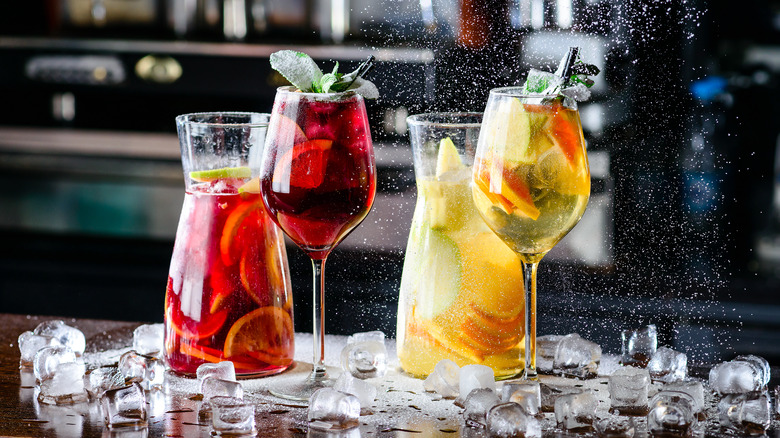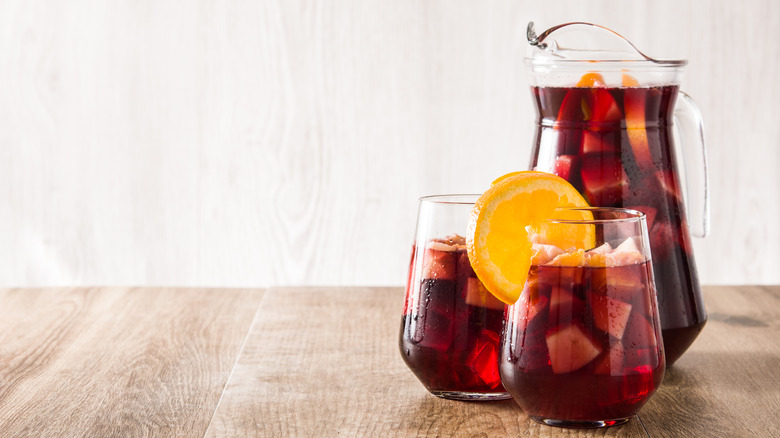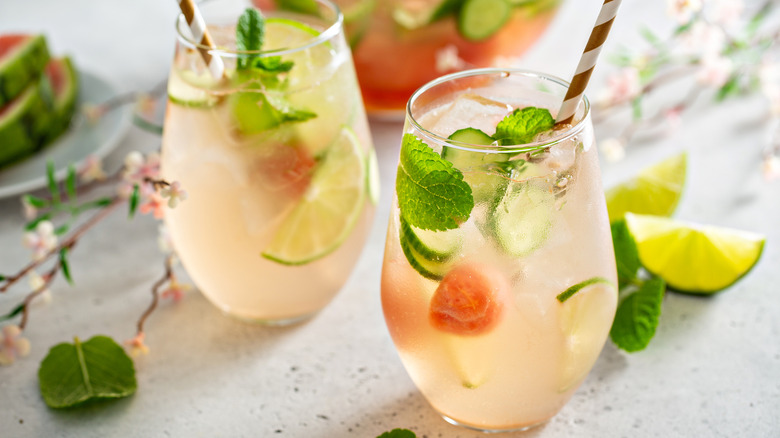What's Really In Sangria?
Sangria. The word alone is festive, stirring up images of warm summer days spent sharing a pitcher of the fresh and fruity cocktail with your friends.
Sangria's history dates back to the days of the early Romans, who mixed wine with fruit, spices, herbs, and water. The drink was a matter of health at the time. Because water was often unsafe to drink, wine was added to kill off any bacteria. The fruits and spices were added to give the water-down wine more flavor. The wine-based drink continued to evolve and grow in popularity around Europe, but it wasn't until the 1964 World's Fair in New York City that the drink gained widespread popularity in the United States, according to Spanish Abores.
Although there are classic recipes for sangria, in recent years, mixologists have gotten creative with the drink, adding a variety of wines, liquors, and fruits. Traditionally, the boozy punch has been made with red wine; after all, sangria's name come from the Spanish word, sangre, meaning blood (via Spanish Abores). While not as common as the red variety, white sangria has gained in popularity in recent years, finding itself on menus alongside the quintessential red wine variety.
Red sangria
Considered the more traditional and most popular sangria variety, red sangria typically consists of red wine, sparkling water or soda water, sugar, spices (like cinnamon, nutmeg, or ginger), and fruit (via Spanish Abores). Brandy, Cointreau, and other liqueurs are also commonly added (via VinePair).
When making sangria, it's important to start with a quality bottle of wine that you would drink by itself. Additionally, some red wines are better in sangria than others. Women's Health recommends using Rioja, garnacha, a California red blend, gamay noir, tempranillo, or a pinot noir. The Kitchn also suggests primitivo or zinfandel, bonarda, and Nero d'Avola for a red sangria.
You can never go wrong with fresh, seasonal fruits for sangria, but lemons, oranges, apples, and peaches are among the most popular for a tradition red sangria, according to Spanish Abores.
Just Wine suggests adding strawberries, blackberries, and/or raspberries, which complement the dark fruit flavors of the red wine.
White sangria
White sangria, of course, begins with white wine — again, one that you would drink on its own. Similar to a red sangria recipe, brandy and/or a fruit-flavored liqueur, sugar, soda water, herbs and spices (like mint and ginger), and fruit are also added. For the wine itself, Paso Wine suggests crisp whites like pinot grigio, sauvignon blanc, vermentino, and grenache blanc. They also recommend moscato, albarino, and even a dry, fruity rosé.
For the fruit in white sangria, Just Wine recommends using green apples, peaches, and pineapple, which bring out the stone fruit and tropical fruit flavors inherent in the white wine. They also suggest some frozen grapes, not just for the flavor, but because they will also help keep the wine cool. Other recipes call for limes, oranges, berries, mango, and kiwi as complementary fruits.
Ultimately, the best-tasting sangria — whether red or white — will be made using wine you love and fresh fruits you love ... and shared with family and friends you love.


